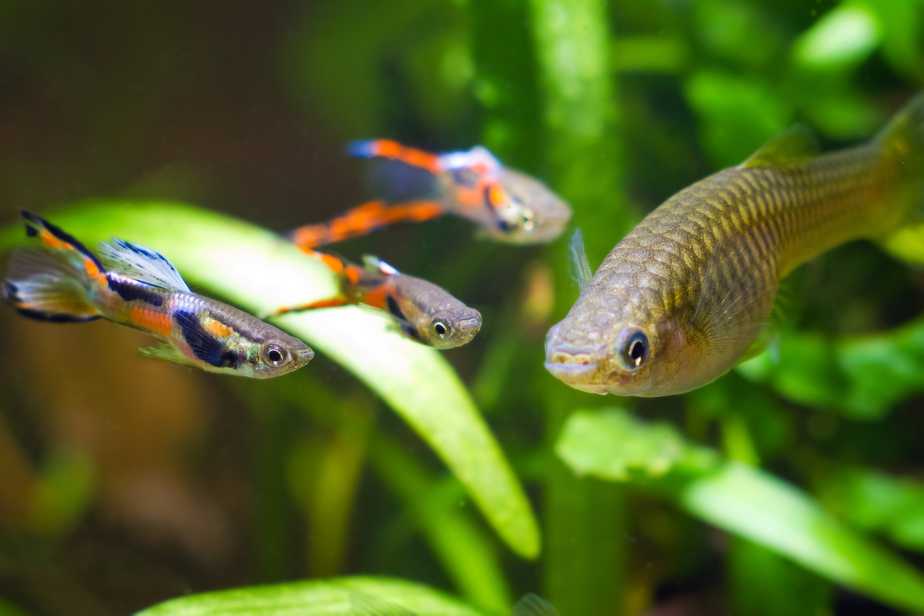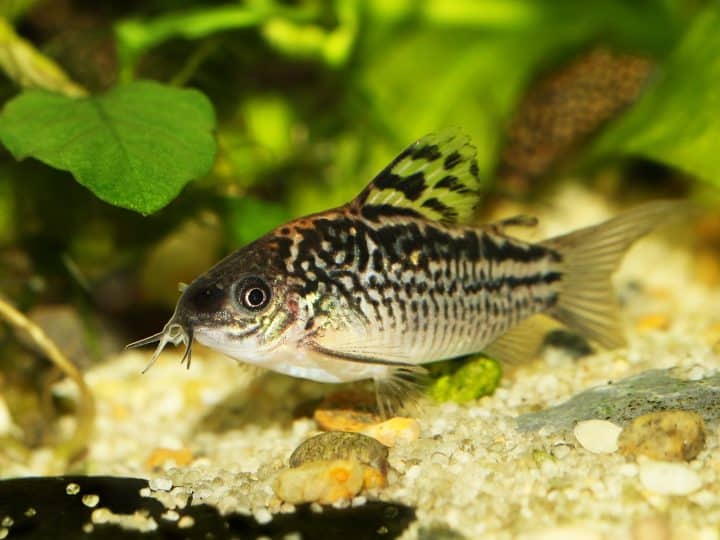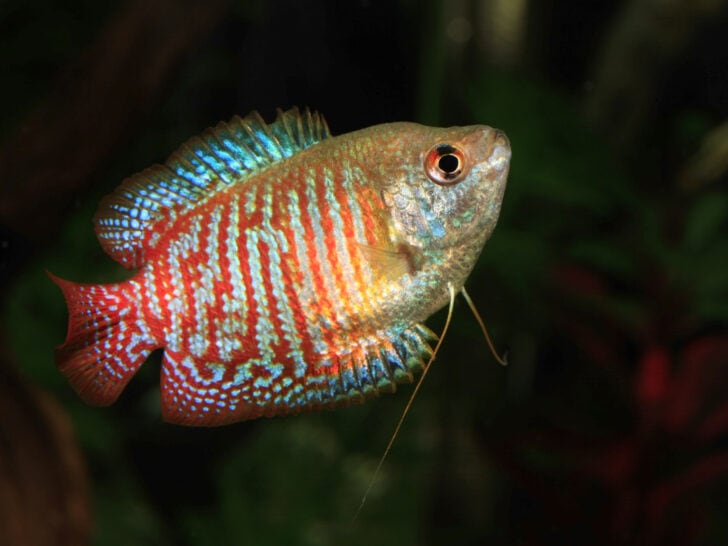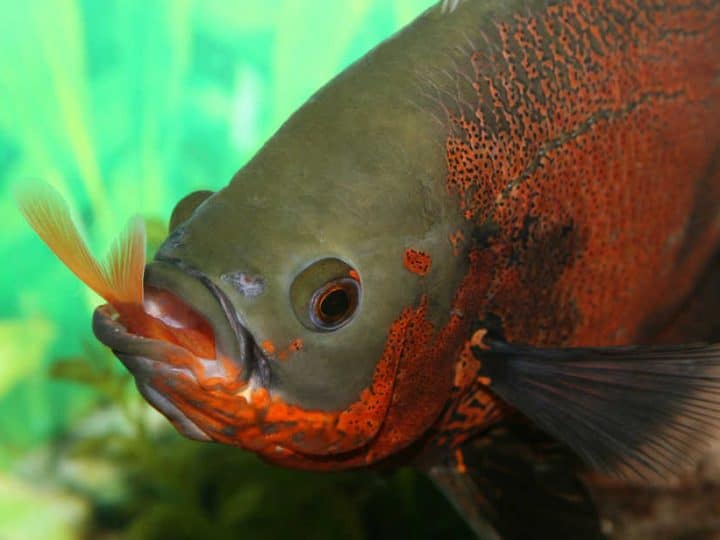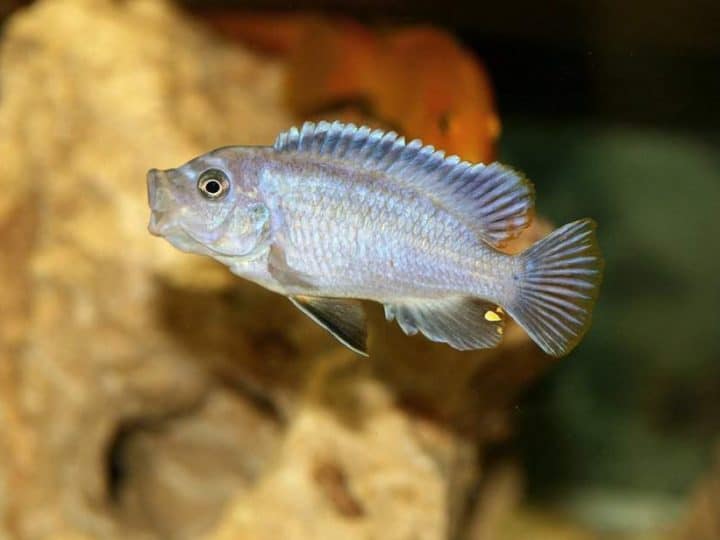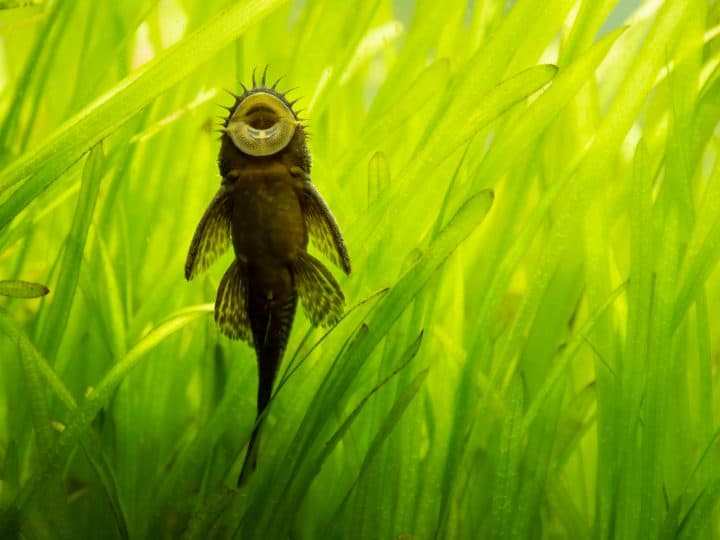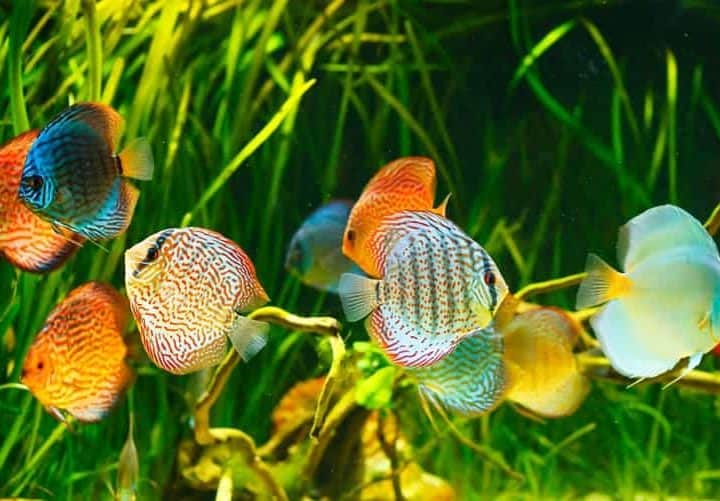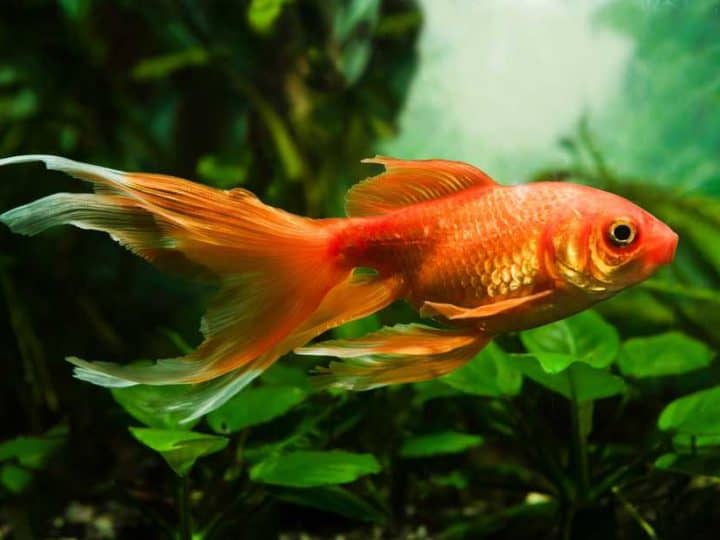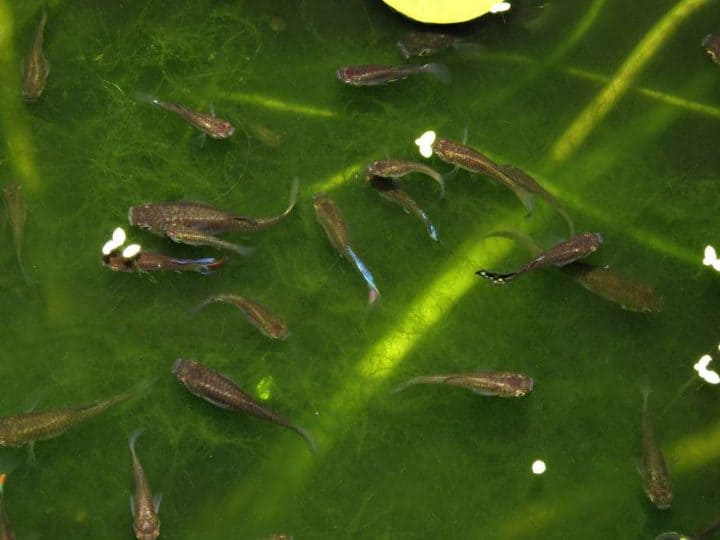Kribensis Cichlids are a great addition to your freshwater home aquarium. They are smaller than other cichlids (considered dwarf cichlids), and come in a variety of colors which makes them great fish to breed!
Quick Answer
Kribensis cichlids can be more challenging to breed than other freshwater fish. You will need to have a separate breeding tank for them, condition them, and introduce spawning by slowly raising the temperature in the tank. They are known to guard their eggs and fry for around one month.
The process can take a bit longer than other fish but it is worth the wait. There are also a few conditions that should be met to make the process go as smoothly as possible. Read on to learn more about breeding these beautiful fish!
Tank Requirements for Breeding Kribensis Cichlids
Breeding Kribensis Cichlids, otherwise known as Kribs, will require specific tank requirements in order to make breeding a bit easier. Thankfully, these fish come from several different backgrounds and aren’t too picky about their surroundings. However, there are a few basics to follow.
Size of Tank
Kribensis Cichlids are on the smaller end of the spectrum when it comes to cichlids. Therefore, they can do with a smaller tank; especially if it is only a pair (which it should be). With that being said, a 10 gallon tank should be the smallest you go for a breeding pair of Kribs.
However, some like to add other fish in the tank. If you add more fish then the tank should be larger; at least 20 gallons. Keep in mind that these cichlids are overall peaceful, but are very territorial and aggressive when it comes to protecting their eggs and fry.
Therefore, having a separate breeding tank is definitely recommended. If your intention is to keep breeding these beauties, you should also have a separate tank for fry.
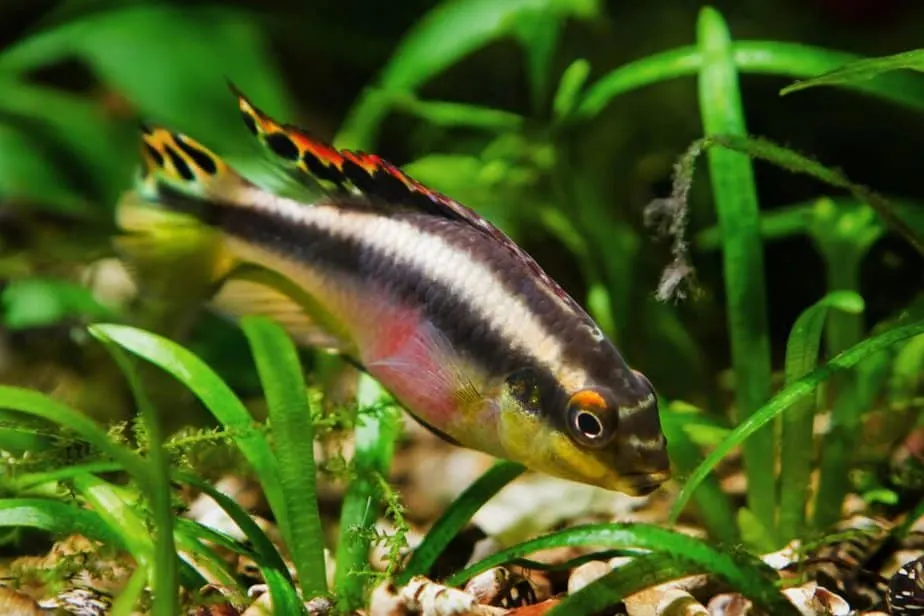
Tank Environment
As mentioned, these fish are used to several different environments. However a few things are essential to have in their tank. In the wild, Kribs tend to live in areas of thick vegetation. Therefore, you should add several live plants to the tank.
These cichlids do tend to have a digging habit so you will want to make sure that the plants are secured, even though they typically don’t eat the plants. Another necessary decoration to have in your tank would be a cave.
Kribensis cichlids are known to hide, especially when spawning, and a cave will give them privacy and a place to protect in the tank. If you don’t have a cave you can use other decorations large enough for them to fit into.
Tank Parameters
As mentioned, Kribensis cichlids come from a variety of different environments. The water parameters are not as important as keeping the tank at constant parameters, (at whichever parameters your tank is set to), especially when breeding. However, there are a few basic guidelines to follow to have the easiest time breeding:
- pH: 5.0-8.0
- Temperature: 75-79°F
- Alkalinity: 5°-20° dGH
Finding a Male and Female
Once you have your breeding tank parameters set, you will need to find a male and female Kribensis cichlids. If you are purchasing the pair from the breeder they will more than likely know how to decipher the males and females.
However, if you are getting the pair from another source you may need to know how to tell them apart. The following table gives you an idea of what to look for:
| Trait | Male | Female |
| Belly Color | Duller | Bright: Cherry Red |
| Length | Longer than Female | Shorter Than Male |
| Dorsal Fin | Ends in a Point | Has a Dull End |
| Girth | Thinner than Female | Plump |
The image below might be of help. The fish on the left is a male, and the right fish is a female. I always find the dorsal fin the easiest and clearest feature to tell them apart.
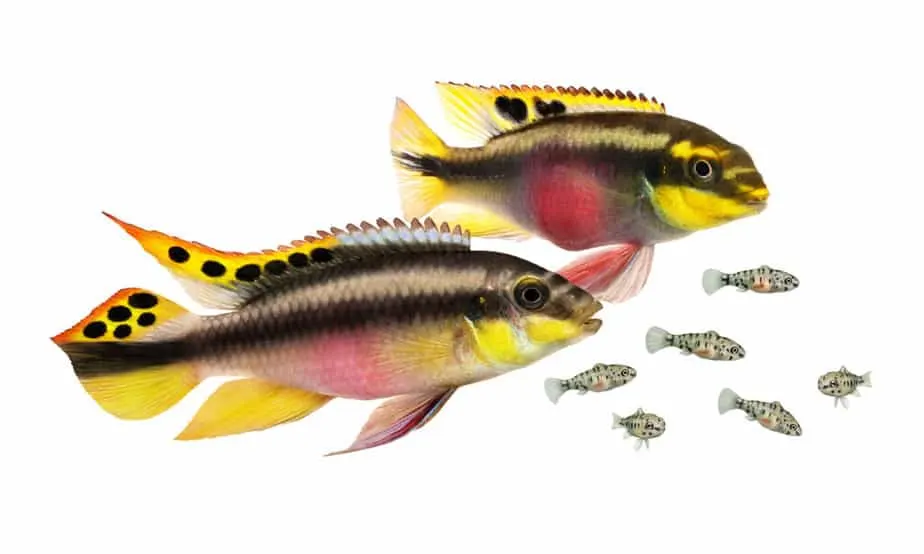
As a reminder, the Kribensis cichlids come in a variety of colors so that can not be a determining factor when sexing them. Also, both male and female Kribensis cichlids had a line going from their nose to tail.
Conditioning Your Kribensis Cichlids
Once you have a male and female Kribensis cichlid, you can then introduce them to their spawning tank. You will then need to condition the fish for spawning. Conditioning the fish for spawning means to have the right food for them and also the right temperature in the tank.
Feeding Your Cichlids
In order to condition the fish, feeding them heavily for one to two weeks prior to spawning is important. Instead of regular fish flakes, you will want them to have more protein so the female has more eggs.
Typically, you can feed the Kribs a wholesome diet of live food. This includes blood worms, white worms, daphnia, scuds, and fairy shrimp. On top of this, you can also add fish pellets.
Temperature
During this one to two week period of conditioning, you will want to slightly raise the temperature in the tank. The maximum tolerable temperature for them is 80°F. Again, make sure to add plenty of caves for them to lay eggs in.
How to Know When Your Cichlids are Spawning
Kribensis cichlids are monogamous which is why it is important to just keep a pair per tank. So when do you know when the deed has been done?
Typically, during spawning the female will deposit anywhere between 50 to 300 eggs; usually on high points in caves or decorations. The male will then appear to swipe over them, which actually fertilizes the eggs. After this is done, you will notice both of the parents “standing guard” over the eggs.
Hatching Eggs
As stated, the male fertilizes the eggs as soon as the female lays them. They only take about three days to hatch and are then considered fry, or baby fish. After the three days, the adults will typically move them in their mouth to another area of the tank to explore.
You will notice that the female will also take the fry on trips to show them the tank when they are around 5 to 10 days old. These fish are very parental and are amazing to watch during this time period. You can also see that the female will scout the area every time before the fry leave the cave, or other area as well.
Once the fry are about a half inch long, they are able to go in a separate fry tank. It is important to note that a regular filter with high water output should not be used. They can actually suck up the fry and kill them. With that being said, the best option is to use a sponge filter in both the spawning and fry tank.
Feeding the Fry
Keeping the fry as healthy as possible is essential to breeding Kribensis cichlids. Thankfully, when the fry are still with the parents they do most of the work. You will want to add baby brine shrimp to the tank which are small enough for the fry to eat.
After they are about two weeks old, you can start feeding them regular fish food flakes or larger foods. This will ensure they can digest the food properly and will not be overfed. It is important to keep in mind that if you are breeding these fish to sell you will have to wait some time.
It is only recommended to sell these fish once they are about an inch long. Once they are this length, you will start to notice the different collaborations of each of the fish!

